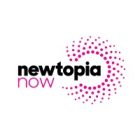

“Design is the dance between the intuitive and intentional.”
Aleena Wheeler*
CPG design research is not a perfect science. If you ask anyone at a packaging design agency how they feel about it, they will likely respond with a mixture of trepidation and enthusiasm. Knowing the pitfalls to responses and how to weigh them helps keep perspective. And valuable insights can inform better design, from preference to functionality to validation. Research is both a guide to measuring effectiveness and a tool to facilitate team alignment and communication. Just approach it with awareness.
First and foremost, taking data in design research at face value is a mistake. Interpreting response is an art form in and of itself. The reality is that all human responses can contain errors or biases, and it is nearly impossible to emulate a genuine shopping experience. When put in a spotlight, people react how they want others to see them––when asked, we treat our pets as children, and money is no object. Get us in a store, and we might choose a “good enough” product at a lower value. Consumers either pretend not to have biases they do, or they have deeply personal ingrained preferences that are individualized and skew responses without anyone knowing it.
Setting clear objectives and modeling the questionnaires around design research is critical to gaining genuinely valuable insights. Consumers should never answer open-ended questions about design or what they “like.” Remember, consumers are not design experts. Instead, questions of functionality, emotional connection, or how they handle tactile package design will be much more meaningful to the process.
What about you? Even clients have their own biases–no one likes to hear negative feedback, and I’ve seen people inclined to dismiss input if it doesn’t match their vision of their brand. Not everyone enjoys looking in the mirror.
Another pitfall in concept design research? People tend to play it safe. They lean toward familiarity, so introducing a design refresh feels jarring or unstable. They will usually choose the concept closest to existing, even if the objectives require a revolutionary shift in strategy.
The most considerable caution is entering research without clear objectives. If the aim of a refresh has nothing to do with elevating quality perceptions, asking questions about premiumness or an increased price point does a disservice to the work around a specific strategy. Honor the original objectives; ideally, they came from primary research efforts, like market research and competitive analyses.
Now you know the dangers. If you are working with a research agency or handling some analysis in-house, here are some quick tips to help mitigate pitfalls in your research:
- Do the initial product, A&U, or demographic research first. Don’t use design research to understand who your target consumer is or what their product usage and attitudes are.
- Vet all questions to ensure they are not leading or do not have cultural implications. Humans are writing the research questions and come with inherent biases too. It’s good to look at the multiple ways to potentially answer a question before you ask it.
- Keep it short and sweet. Do not ask too much, especially if it’s digital or quantitative research, which is much less engaging than in-person. People lose interest in surveys quickly. Give opportunities for optional elaboration instead. A mixture of open and closed questions is best for this.
- Keep all your questions clear, concise, and easy to follow. Create context where appropriate, but be wary of leading. Ex: Don’t ask someone to rank in order of importance without clarifying that one is most or least important.
As long as you see research as one of many tools in the toolkit, it can be precious. Proceed with caution and enjoy the learning process!
For more readings on research, explore these additional articles.
*Designing Brand Identity: An Essential Guide for the Whole Branding Team, 5th Edition, Aline Wheeler










